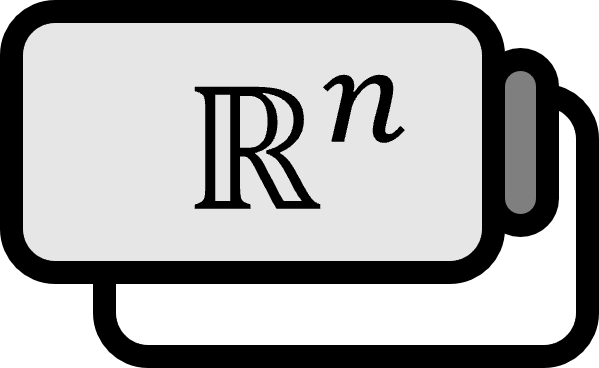Scalar Functions and Vector-valued Functions
Definition
Let $D$ be a subset $D\subset \mathbb{R}^{n}$ of the $n$-dimensional Euclidean space.
- Functions having $D$ as their domain are called function of several variables.
- $f : D \to \mathbb{R}$ is called a scalar function.
- For a scalar function $f_{1} , \cdots , f_{m} : D \to \mathbb{R}$, $\mathbf{f} : D \to \mathbb{R}^{m}$ defined as follows is called a vector-valued function. $$ \mathbf{f} ( x_{1} , \cdots , x_{n} ) : = \begin{bmatrix} f_{1} ( x_{1} , \cdots , x_{n} ) \\ \vdots \\ f_{m} ( x_{1} , \cdots , x_{n} ) \end{bmatrix} $$
Explanation
Function of Several Variables
Terms to denote a function of several variables include function of several variables, multivariable function, multivariate function, etc.
The term function of several variables is mainly used in analysis, including calculus. Originally, whether it’s a scalar function or a vector-valued function, it’s just a function. The term is used only to easily distinguish their codomains. From the perspective of linear algebra, if a vector-valued function is $m=1$, it can be said to become a scalar function, so there is essentially no conceptual difference.
Scalar Function
As an example of scalar functions, consider $ F ( m , a ) := ma$. Whether $m$ is mass or $a$ is acceleration, to a mathematician, it should appear as a $2$-dimensional vector like $(m , a) \in \left( [0,\infty) \times \mathbb{R} \right) \subset \mathbb{R}^2$. $ma$ is simply the product of the two real numbers $m$ and $a$, and since $ma \in \mathbb{R}$, it well satisfies the condition of a scalar function. Meanwhile, in vector calculus, it is also called a Scalar Field since there is a scalar value corresponding to every point in the given space.
Vector-valued Function
As an example of vector-valued functions, consider
$$
\mathbf{q} ( m , v , a ) : = \begin{bmatrix}
ma
\\ mv
\\ {{1} \over {2}} m v^2
\end{bmatrix}
$$. To a physicist, the components might respectively be force, momentum, and kinetic energy, but simply considering it as a vector-valued function it’s nothing more than $\mathbf{q} : D \to \mathbb{R}^3$. Meanwhile, in vector calculus, it is also called a Vector Field since there is a vector corresponding to every point in the given space.
